Beyond the Ordinary: Exploring Korean Eye Surgery
Table of Contents
1. Types of Korean Eye Surgeries
2. Beanefits of Korean Eye Surgeries
3. Hospitalization and Recovery
4. Choosing the Right Surgeon and Clinic
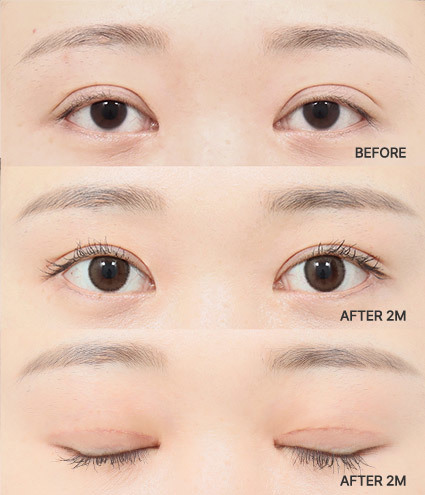
In recent years, South Korea has gained international recognition not only for its vibrant culture and cuisine but also for its world-renowned plastic surgery industry. Among the various procedures offered, Korean eye surgeries have garnered particular attention for their ability to enhance and transform the appearance of one's eyes. Whether you're interested in achieving a more youthful look or addressing specific concerns, Korean eye surgeries offer a range of options to cater to your needs.
Types of Korean Eye Surgeries
Double Eyelid Surgery (Blepharoplasty)
Double eyelid surgery, also known as blepharoplasty, is one of the most popular eye surgeries in South Korea. This procedure aims to create a natural-looking crease in the upper eyelid for those born without one, resulting in more defined and larger-looking eyes. The technique varies based on the patient's anatomy, with options including incisional and non-incisional methods.
Incisional Double Eyelid Surgery
This method involves creating a small incision in the eyelid to remove excess skin and fat. It is suitable for patients with excessive eyelid skin or a pronounced epicanthic fold.
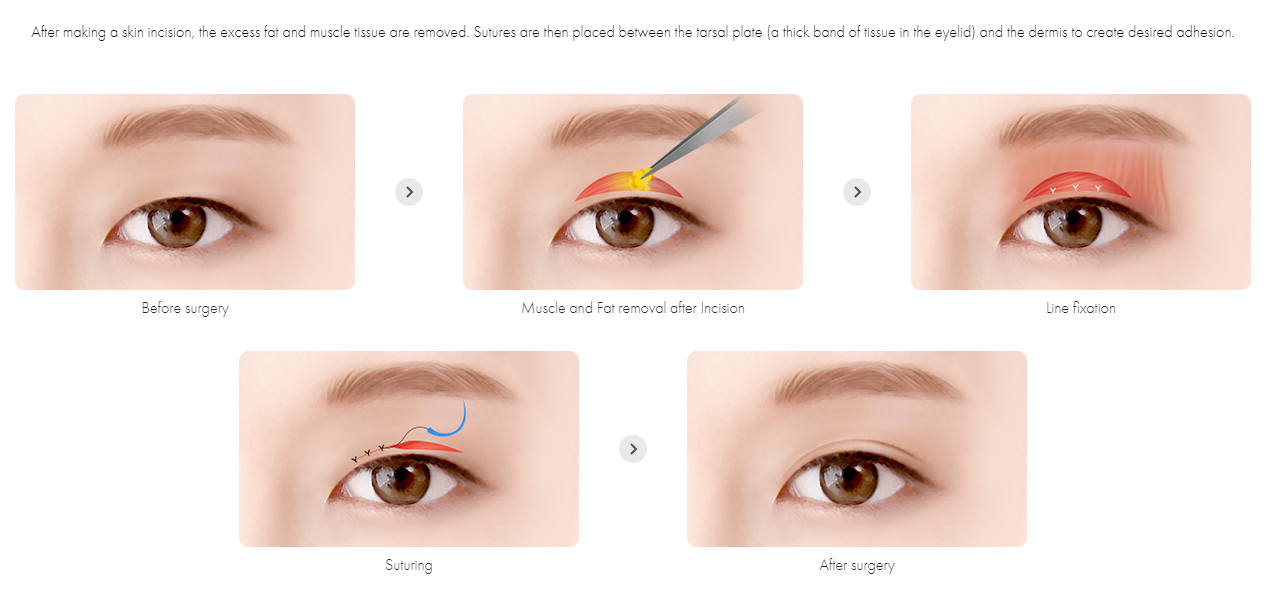
Non-incisional Double Eyelid Surgery
Non-incisional double eyelid surgery involves suturing the eyelid to create a crease. It is a less invasive option with a quicker recovery time.
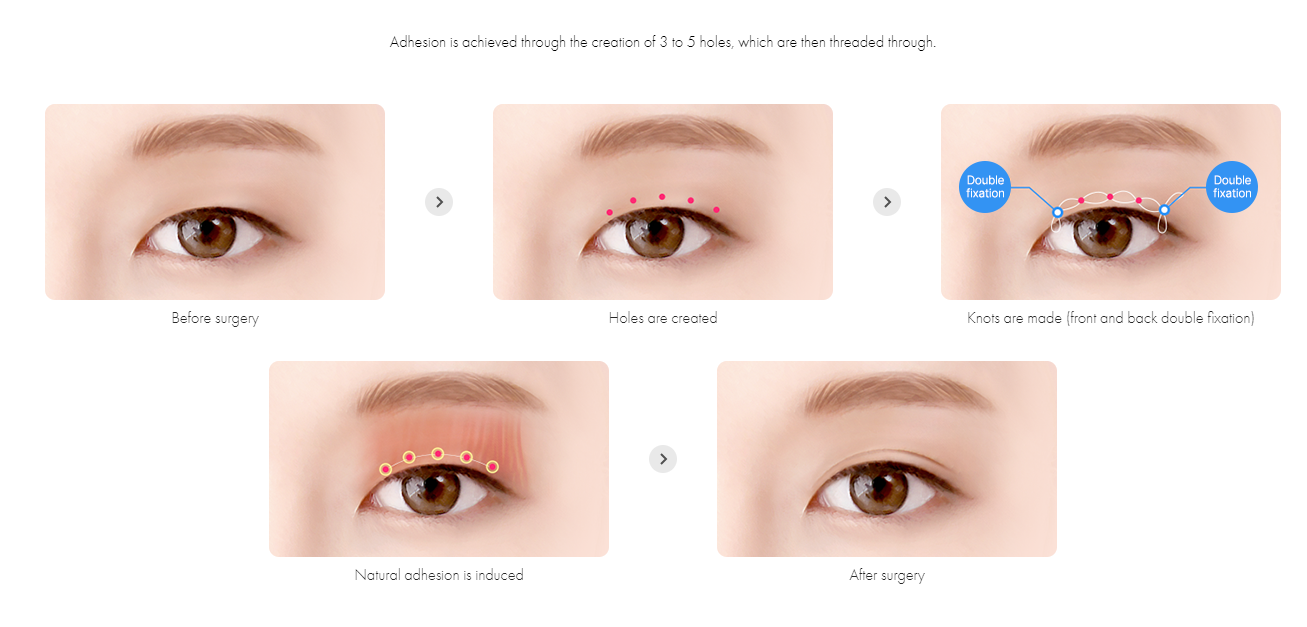
Epicanthoplasty
Epicanthoplasty is a procedure designed to correct or reduce the epicanthic fold, which is the skin fold at the inner corner of the eye. By eliminating or minimizing this fold, the eyes appear wider and more prominent, enhancing overall facial harmony. Epicanthoplasty can be performed alone or in conjunction with double eyelid surgery.
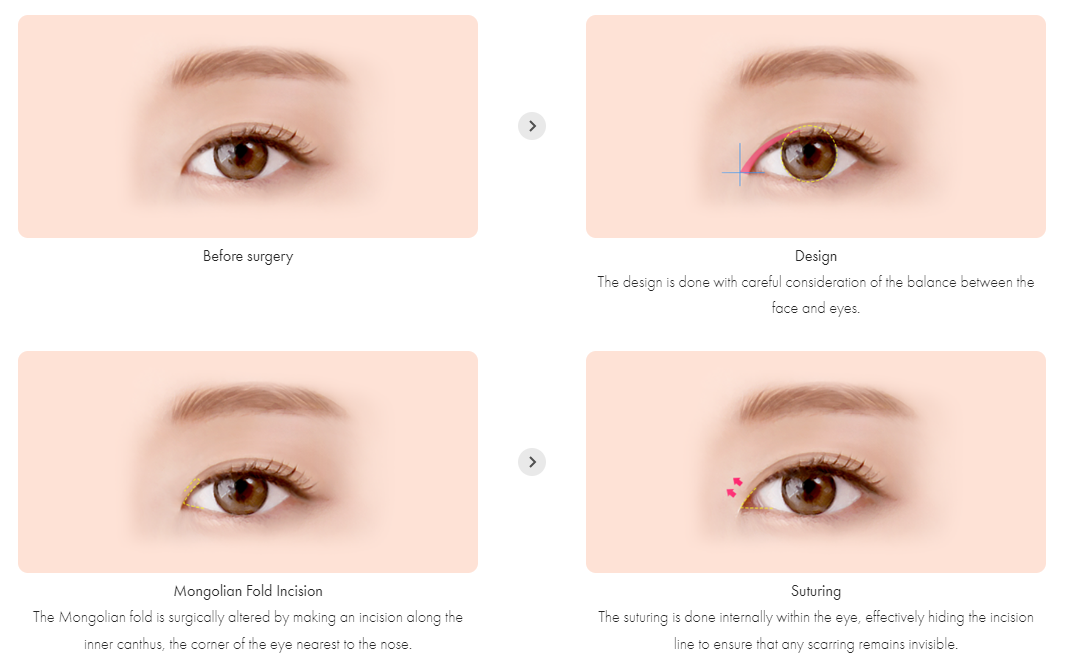
Lateral Canthoplasty
Lateral canthoplasty focuses on the outer corners of the eyes. It involves extending the eye's width by adjusting the position of the outer eye canthus. This procedure can create a more youthful and attractive eye shape while also addressing concerns such as drooping eyelids.
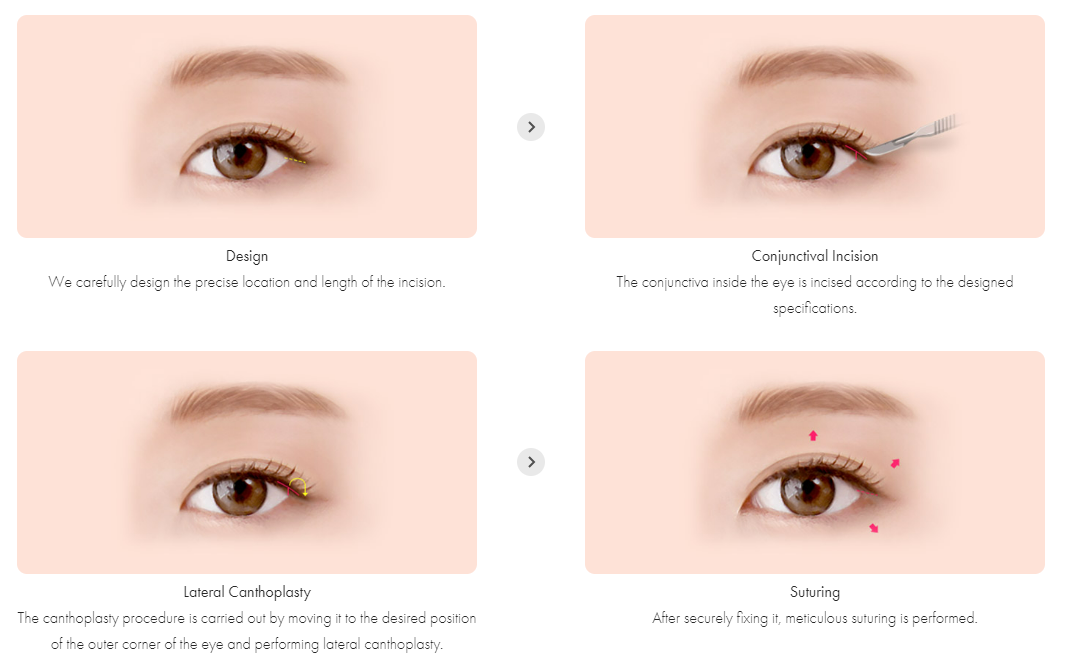
Lower Eyelid Surgery (Lower Blepharoplasty)
Lower eyelid surgery, or lower blepharoplasty, targets concerns such as under-eye bags, wrinkles, and puffiness. Surgeons can remove excess fat, tighten loose skin, and restore a more youthful appearance to the lower eyelids. The goal is to create a refreshed and rejuvenated look.
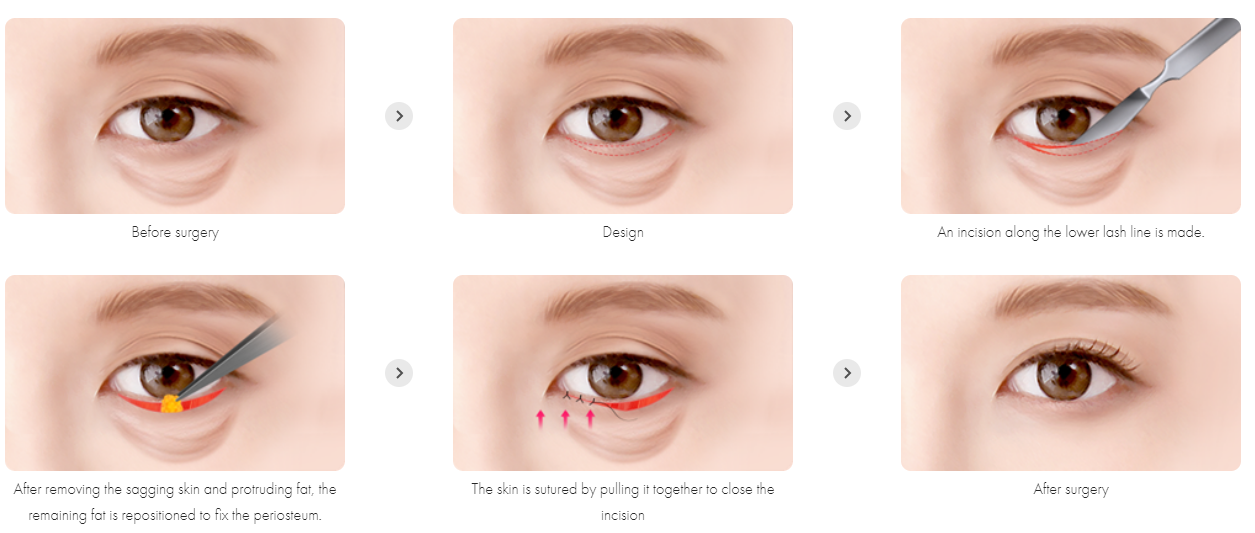
Revision Blepharoplasty
While initial blepharoplasty procedures often yield successful results, there are instances where patients may seek revision blepharoplasty to address issues such as asymmetry, scarring, or unsatisfactory outcomes.
Reasons for Revision Blepharoplasty
Asymmetry
Sometimes, after an initial blepharoplasty, patients may notice asymmetry between their left and right eyelids. Revision surgery can help achieve a more balanced and harmonious appearance.
Overcorrection or Undercorrection
Occasionally, an initial blepharoplasty procedure may lead to overcorrection (excessive tissue removal) or undercorrection (insufficient tissue removal). Revision blepharoplasty can correct these issues to create a more natural look.
Scarring
Scarring, while typically minimal with skilled surgeons, can sometimes be more noticeable than desired. Revision surgery can address and improve the appearance of scars.
Ptosis (Drooping Eyelids)
In some cases, ptosis, or drooping of the upper eyelid, may develop after an initial blepharoplasty. Revision surgery can address ptosis by repositioning the eyelid to improve vision and aesthetics.
Dissatisfaction with Results
Patients may choose revision blepharoplasty if they are not satisfied with the results of their initial procedure or if they desire additional enhancements.
Review the eye surgeries offered at AB Plastic Surgery.
Benefits of Korean Eye Surgeries
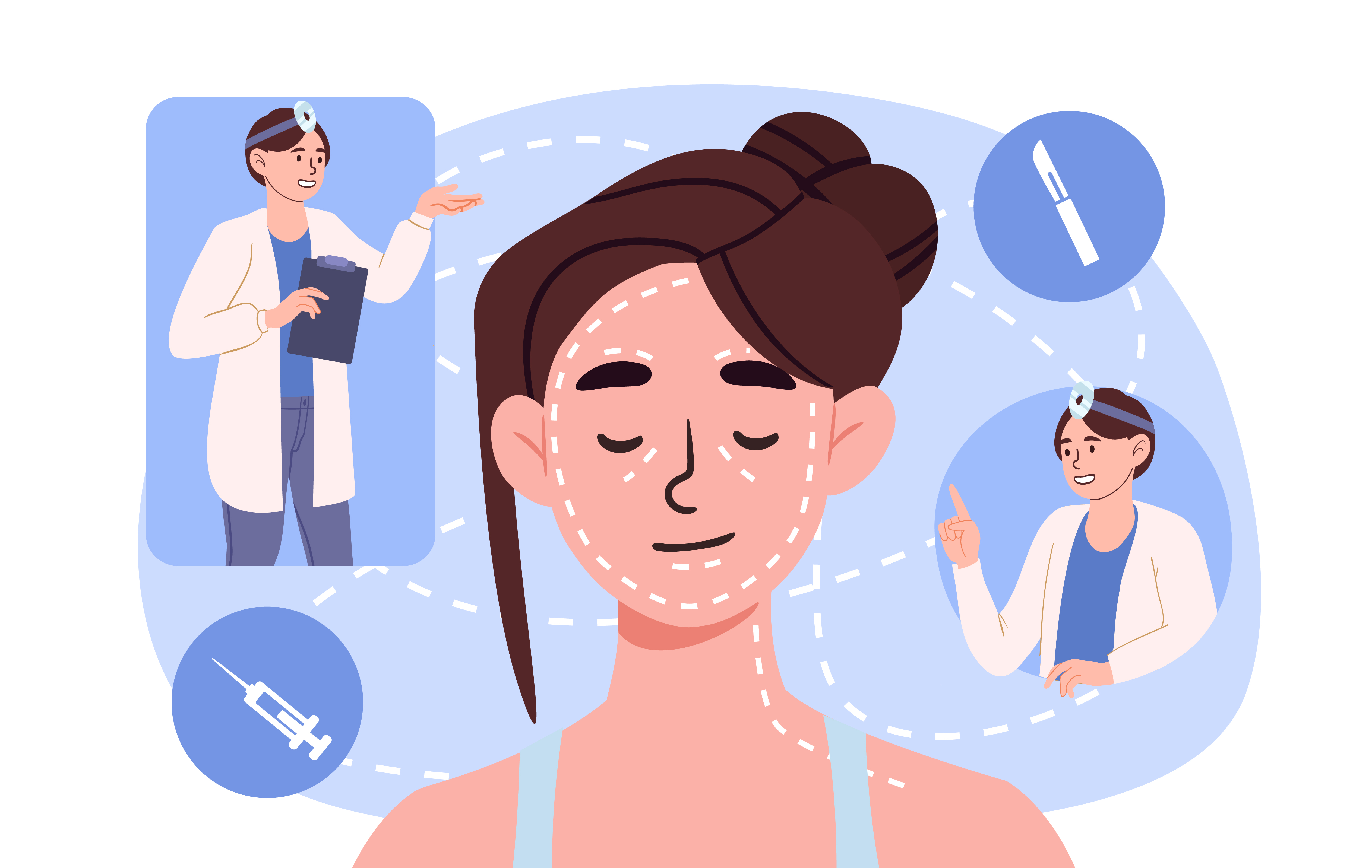
Now that we've explored the different types of Korean eye surgeries, let's delve deeper into the specific benefits they offer:
-
Enhanced Facial Harmony: Korean eye surgeries are designed to improve the overall balance and symmetry of the face. Achieving an aesthetically pleasing appearance involves considering how the eyes fit into the larger context of one's facial features.
-
Youthful Appearance: Many individuals seek Korean eye surgeries to address signs of aging around the eyes, such as sagging skin, wrinkles, and bags. These procedures can help restore a more youthful and refreshed look.
-
Boosted Confidence: Improving the appearance of the eyes can have a profound impact on an individual's self-esteem and confidence. Feeling more comfortable and confident in one's appearance can positively affect various aspects of life.
-
Customized Solutions: Korean plastic surgeons take a personalized approach to each patient's needs. They carefully assess the patient's facial structure and desired outcomes, tailoring the surgery to achieve the best results.
-
Minimal Scarring: Non-incisional techniques for double eyelid surgery and other procedures aim to minimize scarring, leaving patients with natural-looking results and less noticeable surgical marks.
Hospitalization and Recovery
Most Korean eye surgeries are performed on an outpatient basis, meaning you can return home the same day. However, the specific techniques used and your individual case will influence the length of hospitalization and recovery time. Here's a general overview:
Double Eyelid Surgery
Recovery usually takes 1-2 weeks, with swelling and bruising subsiding within this time frame. Sutures are typically removed after 5-7 days.
Epicanthoplasty
Recovery is relatively quick, with most patients resuming normal activities within a week. Swelling and bruising usually resolve within 7-10 days.
Lateral Canthoplasty
Recovery is similar to epicanthoplasty, with most individuals returning to their daily routines within 7-10 days.
Lower Eyelid Surgery
Recovery may take 1-2 weeks, with swelling and bruising diminishing within this period.
It's essential to follow post-operative instructions provided by your surgeon to ensure a smooth and successful recovery.
Choosing the Right Surgeon and Clinic
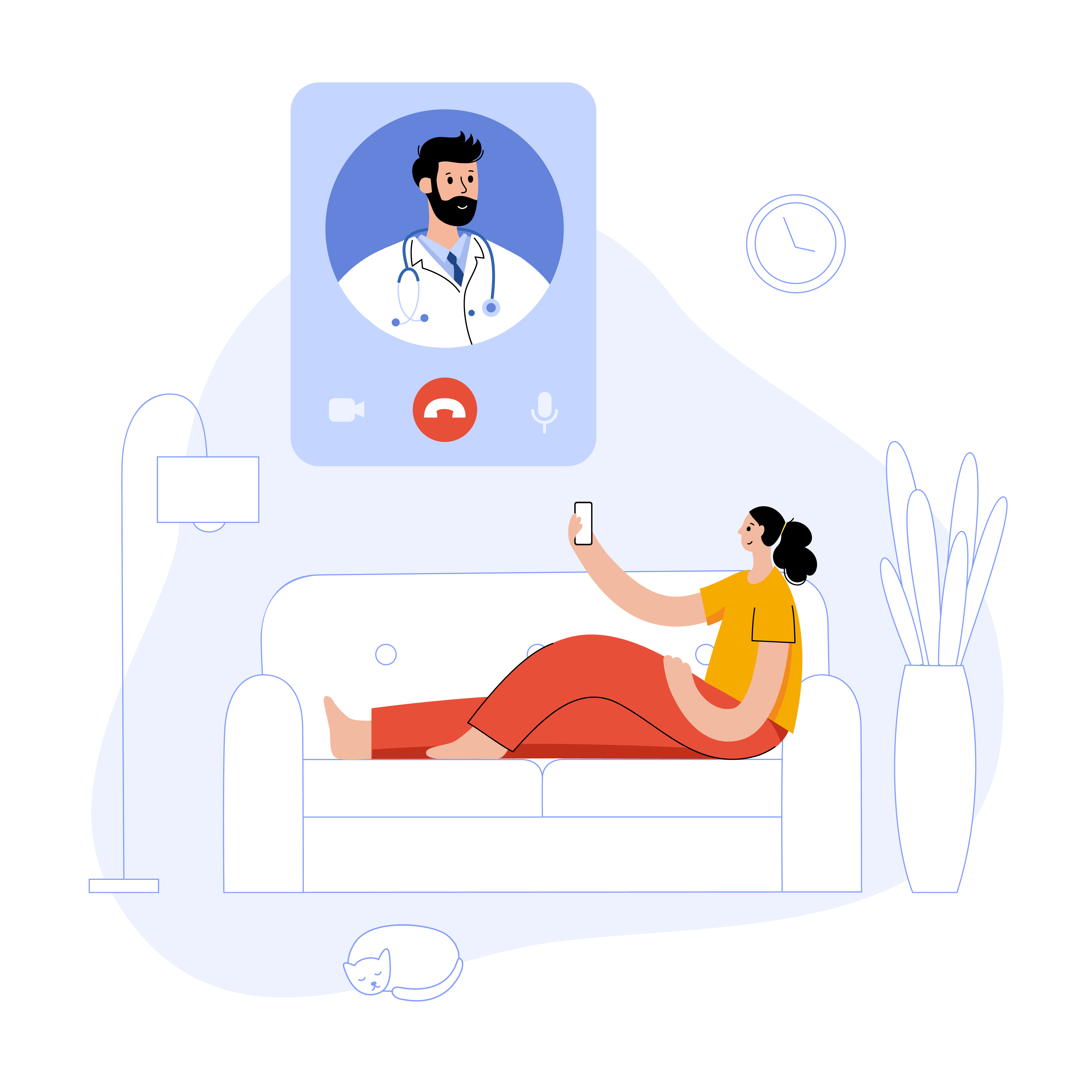
When considering Korean eye surgery, it's crucial to choose a qualified plastic surgeon and reputable clinic. Here are some key factors to consider:
Credentials
Ensure that your surgeon is board-certified and has extensive experience in performing the specific eye surgery you desire.
Reviews and Testimonials
Look for patient reviews and testimonials to gauge the satisfaction of previous patients. This can provide valuable insights into the surgeon's skills and the clinic's reputation.
Consultation
Schedule a consultation with your chosen surgeon to discuss your goals, expectations, and any concerns you may have. A reputable surgeon will provide a thorough evaluation and explain the procedure in detail.
Before-and-After Photos
Ask to see before-and-after photos of previous patients who have undergone similar procedures. This can give you a visual representation of the surgeon's work.
Facility Accreditation
Ensure that the clinic is accredited and follows strict safety and hygiene standards.
Korean eye surgeries have gained immense popularity for their ability to enhance the appearance of the eyes and create a more harmonious facial balance. Whether you're interested in double eyelid surgery, epicanthoplasty, lateral canthoplasty, or lower eyelid surgery, South Korea offers a wide range of options to help you achieve your desired look. Consult with a board-certified plastic surgeon to discuss your goals, determine the most suitable technique, and embark on your journey to brighter, more beautiful eyes. Remember that choosing the right surgeon and clinic is key to a successful outcome, so do your research and make an informed decision.





